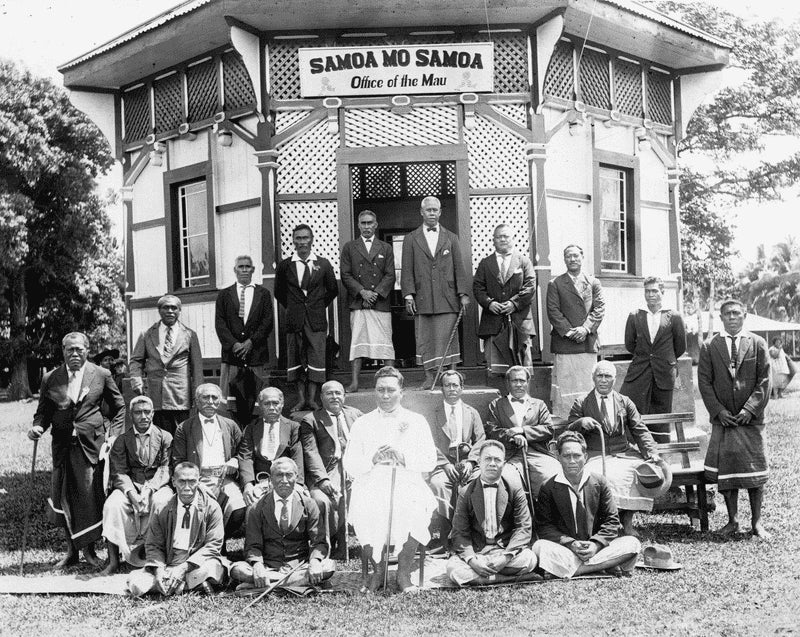MAU: SAMOAN PROTEST AND RESISTANCE
For thousands of years, Samoans have governed themselves and during times of occupation, have resisted in various ways. In ancient times, Sāmoa has been governed under various chiefs.
During the time of what was believed to be the Tongan conquest, Samoans west of Manuʻa were ruled by various chiefs. Manuʻa is believed to have remained independent of the rest of the archipelago.
After contact with the West, Samoans have had various kinds of relationships with the United States and various European countries.
There are various resistance movements called the Mau. The first is the Mau a Pule, which was led by Namulauʻulu Lauki Māmoe, the famous orator of Savaiʻi who protested against German colonial mistreatment of Samoans.
The second more commonly known movement is the Mau a Sāmoa, which occurred during the New Zealand occupation. Several years after New Zealand took over German Sāmoa during the First World War, the Spanish influenza made its way into Sāmoa through the negligence of the New Zealand administration in issuing a quarantine to prevent the disease from entering Sāmoa. American Sāmoa was spared, however, more than a fifth of Samoans in the western islands had been wiped out. Coupled with mistreatment of Samoans, the impacts of the influenza pandemic had fueled protest against the colonial administration.
A less commonly known movement also existed in the American Sāmoa (Mau a ʻAmerika Sāmoa), which protested against injustices by the United States Navy, which was tasked with administering eastern Sāmoa as an American territory.
Although not all movements sought independence as the explicit outcome, they all aimed to get the colonial regimes to treat Samoans better and give them more autonomy and recognition in their own governance.

